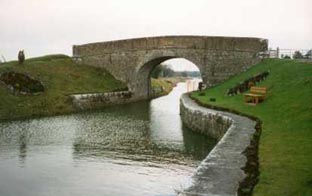A la Campagne
I still cannot get over today's property prices, and how impoverished they make me feel. In Paris I could perhaps afford a two-bedroom flat, in Dublin maybe someone's upstairs. That's too small for a family of five. It may be just a phase, but for now the dream that flickered years ago of a lofty Left Bank pad or a cosy cottage overlooking choppy Dalkey Sound has faded.
Of course, with city prices spiking, there is always the country solution. The myth of rural France is so strong in this city that estate agents use it to describe an apartment overlooking a bit of garden or scraggy tree. La campagne à Paris. A contradiction, of course, in this thickly built bastion. Paris's beautiful gardens are orderly urban sculptures, a taming of nature, a picturesque marriage of stone and shrub where even the trees are coiffed with French bobs. Compare this to London, say, where Hampstead Heath is rural England transposed. Even in the middle of Hyde Park there is a cottage on a hill, amid oaks, lanes and a bench, a very Constable setting.
Greater Paris may have some 9 million people, but they are piled up together. Though the traffic is thick, the countryside is not that far away. There's Normandie to the west, and the banks of the Marne to the east, where fairly decent homes seem affordable. And have you ever been to Seine Port, Compiègne or Gerberoy? In fact, the Paris region is full of rural treasures, with unsung places that would be national monuments in many countries. Some landscapes remind me of east and central Ireland. Near Senlis you could be in Kildare or Meath; and a recent drive in Picardie carried a hint of Longford.
Many Parisians escape to family homes in the country at weekends, but would they live there? While the Irish do not seem to mind long commutes to Dublin, in general the French shun them, preferring to swim in these Latin cities of dense ordered chaos.
In Ireland towns spill out thin and far. Dublin city sprawls on, sucking in once far flung towns and villages. Property prices have followed. Here's an ad from Longford, in Ireland's heartland. "Residential Foodstore and Newsagency with Lotto, Funeral Undertaking and Petrol Pumps: ?500,000"; that's quite a price tag for a community business in a county once so remote!
Then again, what value can you really put on a place? No one goes to Longford, local people say, just through it. For many Longford is a non-descript coffee stop on the road from east to west, or the gateway to fishing and boating on the nearby Shannon. Still, the county has a few claims to fame: writers Oliver Goldsmith and Maria Edgeworth came from there, as did Mel Gibson's ancestors, and it has handy soccer and gaelic football teams. Longford even has an historical French connection: in September 1798 , near the village of Ballinamuck, France's General Humbert, who had just defeated the British at Castlebar, found his small army badly outnumbered. Humbert prepared his 850 troops for battle, but despite the assistance of a thousand Irish rebels, the bloody fight ended in surrender after just half an hour. It was the final battle of the Year of the French.
I spent some of my boyhood in Longford, staying with my ma's family. Originally from Westmeath, even they were only passing through, but to me Longford is where they are from. A three-hour car journey along bumpy roads and over curving stone bridges, from Kinnegad to Ballymahon, and then ever deeper into a web of country lanes to Kenagh and Moydew. Cow pads, streams, wild geese, barking dogs, trundling cows, silence. In winter the grey sky and landscape merged into one, but the summers were colourful and bright.
It was a faraway place where attitudes were as stubborn as the soil. An old blind farmer sitting by an open fire once explained that he always voted Fianna Fail because they had built the road to the town some 50 years earlier.
Today, sprawl and wide fast roads have hauled Longford to the edge of Dublin. But while its property prices have soared, soft peaceful places remain among the narrow roads from Granard to Abbey Derg. The tourism office is right to describe Longford as "a hidden gem".
Perhaps like General Humbert I might do worse than surrender to the estate agents' pikes, to seek out my own gem, in Picardie or some other sodden land.
©RJ Doyle, September 2004
Visit www.longford.ie
For more on Ballinamuck, see
www.irish-society.org/Hedgemaster%20Archives/ballinamuck.htm
For Ile de France, see www.pidf.com
blog comments powered by Disqus
